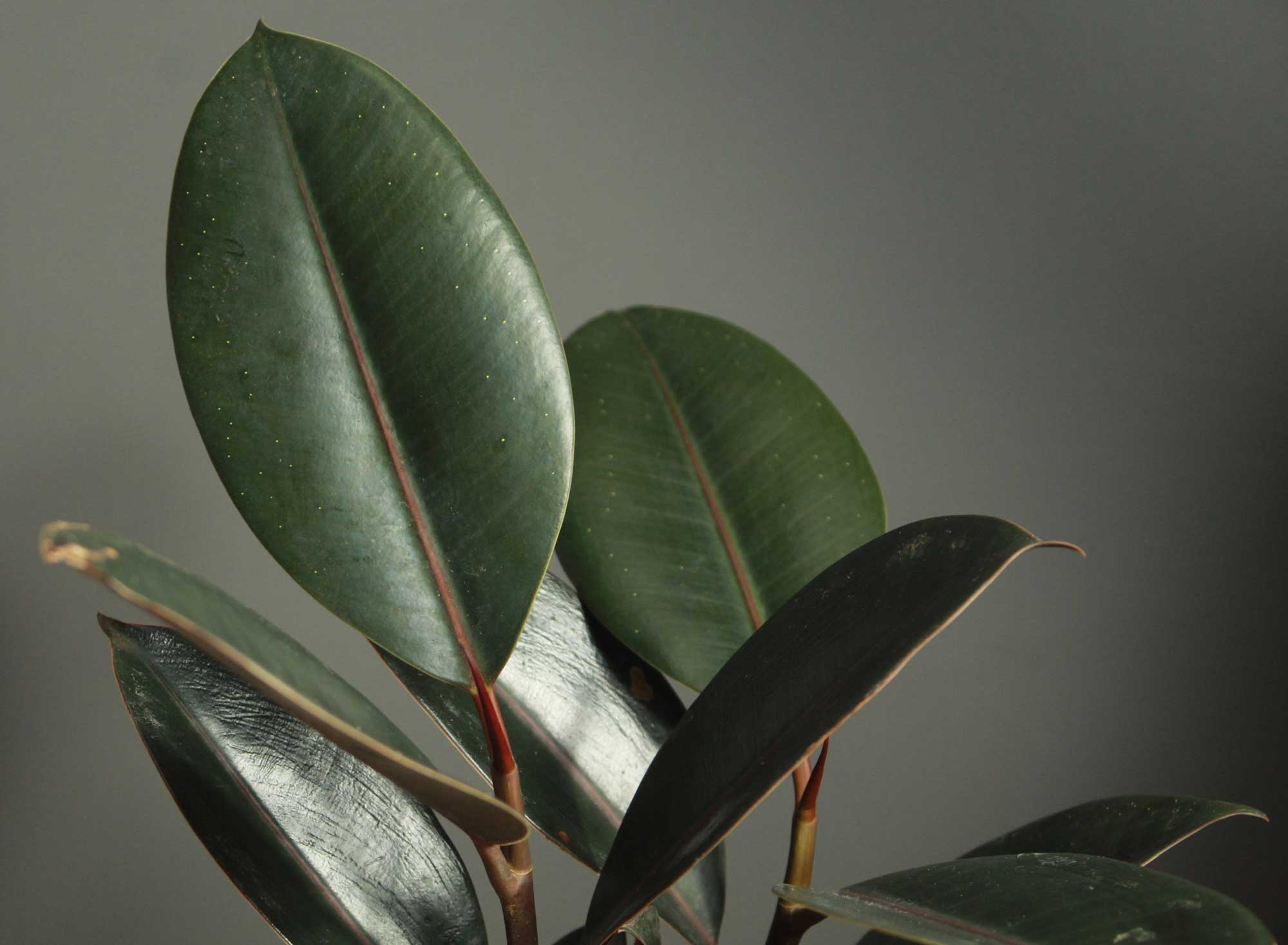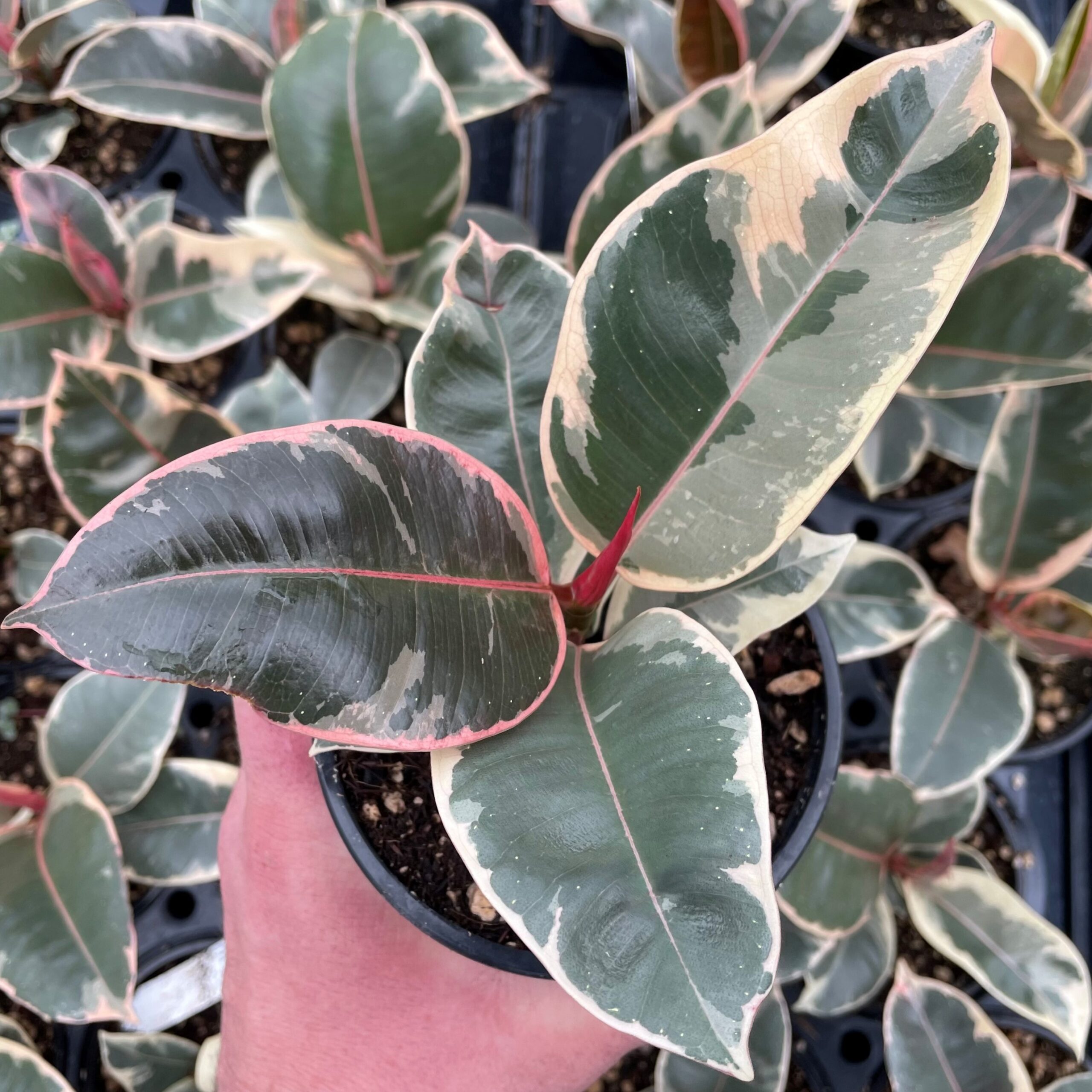Unveiling the allure of the Ficus Ruby Rubber Plant, this comprehensive guide invites you on a journey of discovery, delving into its captivating characteristics, essential care, and myriad benefits.
With its distinctive burgundy-hued foliage and resilience, the Ficus Ruby Rubber Plant emerges as a captivating specimen, ready to grace your living spaces with its undeniable charm.
Ficus Ruby Rubber Plant Characteristics

The Ficus Ruby Rubber Plant is a captivating and visually striking houseplant that stands out with its unique foliage and vibrant color. It is a member of the Moraceae family and is native to the tropical regions of Asia. Its scientific name is Ficus elastica ‘Ruby,’ and it is renowned for its hardiness and adaptability.
The Ficus Ruby Rubber Plant exhibits a bushy growth habit, featuring a sturdy central stem with multiple branches extending outwards. Its size can vary depending on the growing conditions, but it typically reaches heights of 6-10 feet indoors. The plant is characterized by its large, glossy leaves, which are the focal point of its aesthetic appeal. The leaves are oval-shaped with pointed tips and measure approximately 6-12 inches in length. They emerge with a deep burgundy-red hue, which gradually matures to a deep green color as they age. The leaves possess a leathery texture and prominent veins that add to their visual interest.
The Ficus Ruby Rubber Plant is a relatively low-maintenance plant that prefers bright, indirect light. It can tolerate low light conditions but may exhibit reduced growth and leaf discoloration. The plant thrives in well-drained soil and requires moderate watering, allowing the soil to dry out slightly between waterings. It prefers warm temperatures between 65-80°F (18-27°C) and high humidity. With proper care, the Ficus Ruby Rubber Plant can become a long-lived and beautiful addition to any indoor space.
Care and Maintenance of Ficus Ruby Rubber Plant

Maintaining the health and beauty of your Ficus Ruby Rubber Plant requires a consistent and attentive care routine. Understanding the specific needs of this plant will ensure its longevity and vibrant appearance.
Watering Frequency
Water your Ficus Ruby Rubber Plant thoroughly when the top 2-3 inches of soil feel dry to the touch. Avoid overwatering, as soggy soil can lead to root rot. During the growing season (spring and summer), water more frequently (about once a week), and reduce watering in the fall and winter (about every 10-14 days).
Fertilization Requirements, Ficus ruby rubber plant
Fertilize your Ficus Ruby Rubber Plant monthly during the growing season with a balanced liquid fertilizer diluted to half strength. Avoid over-fertilizing, as this can damage the plant’s roots.
Pruning Techniques
Prune your Ficus Ruby Rubber Plant as needed to maintain its desired shape and size. Use sharp, clean pruning shears to make clean cuts. Prune away any dead or damaged leaves or stems, and trim back overgrown branches to encourage bushier growth.
Pest and Disease Control
Ficus Ruby Rubber Plants are generally resistant to pests and diseases, but they can occasionally be affected by mealybugs, spider mites, or scale insects. Treat infestations promptly with an appropriate insecticidal soap or neem oil solution.
Propagation Methods
Propagate your Ficus Ruby Rubber Plant through stem cuttings. Take a 4-6 inch cutting from a healthy stem, remove the lower leaves, and dip the cut end in rooting hormone. Plant the cutting in a pot filled with well-draining potting mix and keep it warm and moist until roots develop.
Uses and Benefits of Ficus Ruby Rubber Plant
The Ficus Ruby Rubber Plant is not just a beautiful addition to any space; it also offers several practical uses and health benefits.
Decorative Uses
This versatile plant can elevate both indoor and outdoor spaces. Its vibrant foliage and unique growth habit make it a stunning centerpiece in living rooms, offices, and patios. The plant’s adaptability allows it to thrive in various lighting conditions, making it suitable for different rooms.
In exterior landscaping, the Ficus Ruby Rubber Plant can add a touch of greenery to balconies, decks, and porches. Its ability to withstand full sun to partial shade makes it a resilient choice for outdoor environments.
Air-Purifying Capabilities
The Ficus Ruby Rubber Plant is recognized for its air-purifying abilities. Studies have shown that it effectively removes harmful toxins, such as formaldehyde and benzene, from the air. This makes it an ideal plant for homes, offices, and other indoor spaces where air quality is a concern.
Health Benefits
Beyond its decorative and air-purifying properties, the Ficus Ruby Rubber Plant may also have certain health benefits. Its presence in indoor spaces has been linked to reduced stress levels and improved mood. Additionally, the plant’s ability to filter toxins may contribute to overall well-being.
Incorporating into Home Decor
The Ficus Ruby Rubber Plant can complement various home decor styles. Its bold foliage adds a touch of vibrancy to modern and contemporary spaces. In traditional settings, it brings a touch of nature and organic charm. The plant’s adaptability allows it to be placed on tables, shelves, or even hung from the ceiling, creating a visually appealing and healthy living environment.
The ficus ruby rubber plant, known for its distinctive burgundy leaves, can thrive in various environments. If you’re looking to add a touch of winter beauty to your lawn, consider planting snowdrops . These delicate white flowers bloom early in the spring, creating a stunning contrast against the lush green grass.
Once the snowdrops have faded, the ficus ruby rubber plant will continue to add vibrant color and interest to your landscape.
Ficus ruby rubber plant thrives in well-drained soil and bright indirect light. If you’re looking for a stylish way to showcase this beautiful plant, consider using a semi circle planter box . These planters offer ample space for the plant’s roots to grow while adding a touch of modern elegance to your home décor.
The curved shape of the planter complements the ficus ruby rubber plant’s lush foliage, creating a visually appealing display that will enhance any room.
The ficus ruby rubber plant, known for its vibrant burgundy leaves, is a popular choice for indoor decoration. Like the queen of the nile plant , it belongs to the genus Ficus and is native to tropical regions. While the queen of the nile plant is known for its unique variegated foliage, the ficus ruby rubber plant stands out with its deep, velvety leaves that add a touch of drama to any room.